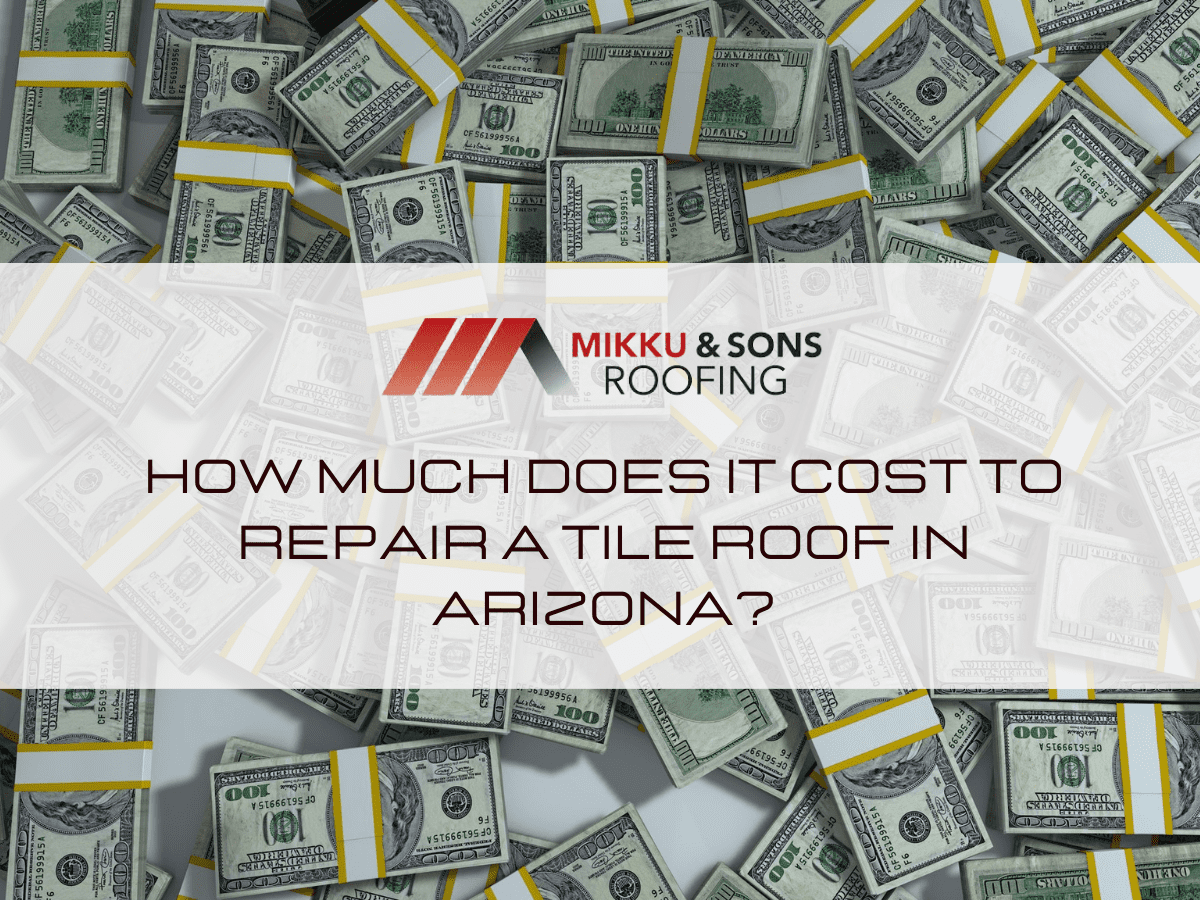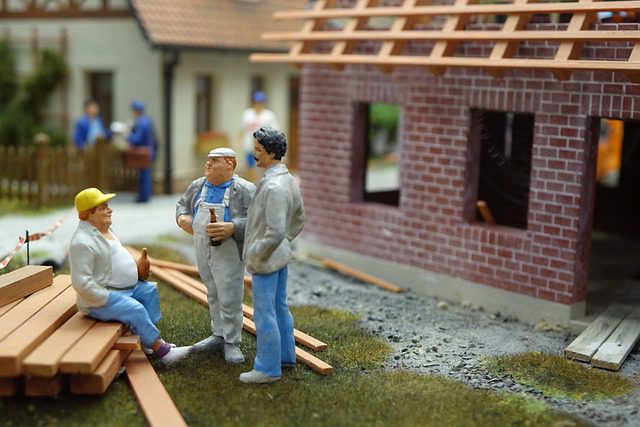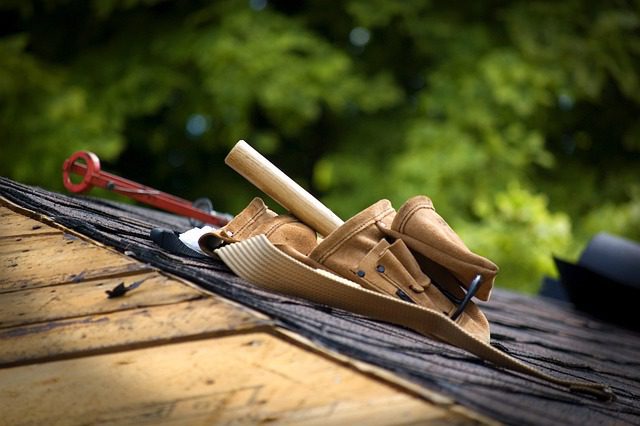

It is anticipated that tile roofing should endure a lifetime. Nevertheless, there are situations when it needs to be fixed owing due to leaks caused by slipping, cracking, or sagging, defective flashing, or a worn-out underlayment. Making repairs as quickly as feasible is critical.
Damage gets gradually worse if not corrected. The repair prices and considerations for these materials are distinct from those for other types; if they need to be serviced or repaired, it is essential to have a good hold on them.
Damage could arise from a range of different sources. Wind, ice, debris, hail, and even the sun's heat all cause damage to a roof over time.
When a roof of this type is damaged, it usually only affects a single tile at a time. In most circumstances, you will not have to replace all of the tiles on the roof. Only damaged ones will need to be replaced, but it's always advisable to get an expert opinion to see how bad the damage really is.
In other circumstances, the repair might not even require new tiles. Alternatively, you might have the current tiles repaired. When the tiles are damaged, they can potentially cause leaks, which can, in turn, generate additional damage to the roof. Damage to the building's interior from leaks is also possible and can be expensive to repair.
| Repair cost | Price |
| Material | Composite tiling: $10 and $20.50 per sq ft Plain tile: $8 to $9 per sq. ft Terracotta tile: $11 to $23 per sq ft Slate: $12 and $14 per sq ft |
| Style | Plain tile: $8 to $9 per sq. ft Pantile tiling: $8 to $10 per sq ft Mission tile: $9 to $11 per sq. ft Roman tile: $9 to $11 per sq ft Spanish/ Mediterranean tile: $8.50 to $11 per sq ft French tiling: $9 and $11 per sq ft Interlocking tiling: $9 to $11 per sq ft Tile repair: $9 to $11 per sq ft Scandinavian tiling: $12-$14 per sq ft |
| Problem | Slipped tiling: $8 - $13 per sq ft Sagging: $15 to $25 per sq ft Flashing costs: $25 to $30 Repairing a crack: $25 to $50 per tile Leak repair: anywhere from $150 to $500. |
Repairing a tile roof can cost anything from $900 to $2,300 across the country. Steel tiles damaged by area damage on a 1,500 square foot roof typically cost roughly $1,800 to repair. The least expensive option available is approximately $500 to repair metal flashing that is damaged or missing. Repairs of deteriorated underlayment and replacing the roof at the high end could cost up to $8,000.
How much does it cost to repair a tile roof in Arizona? Many factors can affect the cost, e.g., the type of material and quantity of tiles that need to be replaced or repaired. Concrete, lightweight concrete, metal, and clay are all possibilities.
Tile Roof Repair Cost by Material
The cost of repairing a tiled roof ranges from $8 to $23. The material has an impact on it. Prices for various types of materials might differ significantly. When compared to other types, some demand more in the way of materials and labor. Concrete is the cheapest option, while clay or composite is in the middle of the cost spectrum. The table below includes the most popular types of materials available and their repair costs per square foot.
Cost of Tile Roof Repair by Style
The style impacts the repair expense, ranging from $8 to $14 per sq. ft., depending on the style of tiling. When completing your study, you will notice the many styles available on the market. All styles differ in appearance, texture, and cost. Style is a component that also affects the price you pay. A flat style is less expensive than a Roman style since it is more straightforward. Below you'll find a table that illustrates the relative costs of repairing various cost styles.
Tile Roof Repair Cost by Problem
Your structure is a considerable investment that carries out the crucial duty of protecting you and all of your assets. Ignoring any tiny problem now can lead to significant problems later on. Some typical issues include leaks, sagging, slid tile, cracked tiling, and damaged flashing. The price of tile repair by problem ranges from $8 to $25 per sq. ft. and $25 to $500 per problem.

Sixty percent of the overall repair costs range from $900 to $2,300. $540 to $1,380 will be spent on labor, with materials accounting for the remaining 40 percent. A professional might be engaged to complete repairs at $45 to $75 per hour for labor.
If your style is out of the ordinary or the slope is steeper than average, your labor costs will rise. The repair process starts with visually inspecting the structure to establish the issue and the necessary repairs.
Then, they will negotiate a repair strategy, which may involve removing and replacing damaged components. Repairs aren't always necessary for the entire piece. The repair needed directly influences the project's cost and duration. Even the tiniest of repairs require at least two hours to accomplish.
| Project | Cost |
| Tile restoration | $300 to $600 and up to $6,000 to $11,000 |
| Tile replacement | $5.50 to $36 per square foot |
| Underlayment replacement | $0.50 and $2 per square foot |
| Roofing felt replacement | $0.50 and $1 per square foot |
| Synthetic roof underlayment | $0.75 and $2 per square foot |
Minor restoration projects, such as cleaning the gutters, might average between $300 and $600, depending on the size of your structure. However, a thorough restoration costs around $2,500 for an average property.
Prices might range from $6,000 to $11,000, depending on the scope of the work. Restoration is the process of extending your structure's longevity, offering you a cheaper option than a complete replacement.
Over time, tiles can be damaged by several factors, including extreme weather, infestation, or falling debris. This technique entails cleaning, repairing, or replacing any broken, damaged, or cracked surface. Protecting the surface with a clear coat prevents any further damage.
If the materials need to be replaced, you may spend roughly $5.50 to $36 per sq. ft. The replacement cost includes removing the current materials and discarding the old ones, underlayment, materials, and installation.
Although it can appear expensive to replace tiles, it is occasionally a more practical alternative than repair. If your anticipated price to repair is more than half the replacement price, you may want to consider a total replacement instead. Several positives to consider regarding a replacement, including having all concerns repaired at once.
If you opt to repair one area of your structure, another area might need repair later. Long-term savings are realized by having your structure repaired instead of replacing the existing one.
Depending on the material, replacing an underlayment costs between $0.50 and $2 per square foot. The underlayment between the tiles and the deck acts as a protective barrier, keeping the surface dry and free of leaks and damage caused by the elements.
Repairing or replacing a structure often necessitates replacing the old underlayment, especially if the structure is more aged. A robust underlayment protects your structure if damaged and can prevent many severe problems from developing, including leaks.
Underlayment is typically included in the project cost, but it never hurts to double-check.
Felt, commonly known as asphalt-saturated felt, has been a standard underlayment material for construction types for decades. The material is comparable to tar paper but combines polyester, cellulose, bitumen, and asphalt soaked in a waterproofing agent.
It costs between $0.50 and $1 per square foot to replace the felt underlayment, including the materials and labor. It's available in two weights: 15 lbs. and 30 lbs.
Compared to the 15-pound type, the 30-pound class is significantly thicker and more rigid. As a result, the 30-pound felt is an excellent option due to its resistance to damage from the elements.
It costs between $0.75 and $2 per square foot to replace synthetic underlayment, including supplies and labor. Underlayment should be replaced if damaged or exposed for an extended time. Professionals currently employ synthetic underlayment as their primary underlayment.
Compared to paper or asphalt, durable plastics like polyethylene and polypropylene are commonly used in synthetic underlayment. Exceptional strength, flexibility, and waterproofing characterize this underlayment, making it resistant to mold and other fungi.
This tear-resistant substance stays smooth and rarely tears around fasteners. It holds up nicely against UV damage and light.
As a result of its sturdiness and endurance to the harshest conditions, tile is a popular flooring choice for many homes. Maintaining and giving reasonable care to your structure is a must.
It should be checked at least twice or thrice a year or after a large storm or other weather events that could have caused harm. During the examination, clear the area of any debris and inspect the tiles, fasteners, and sealant. If there are any damaged sections, suitable measures should be taken quickly to reduce further concerns.
You should clean it any time you spot stains, mold, or mildew. Hand cleaning with a trowel and wire brush is the preferred method. Consult a professional if you aren't sure if you can handle it on your own. Avoid using high pressure on the structure.
This has devastating damage. Once your surface has been thoroughly cleaned, you can take additional steps to protect your building, such as polishing, priming, painting, or resealing to keep it in good condition.

| Project | Estimate cost |
| Removal of a Roof | $0.50 to $1.5 per square foot |
| Tile painting | $2,550 to $4,250 |
| Roof support | $300 to $5,000, $500 to $5,000 (Truss replacement) |
| Roof Inspection | $100 to $600 |
| Tile cleaning | $0.30 to $0.75 per square foot |
Removing a roof might cost anything from 50 cents and 1.5 cents per square foot. You can anticipate paying double this cost for structures with more than one layer of tiles.
2. Roof Tiles Paint Prices
Typically, painters charge from $2,550 to $4,250 for painting. The amount varies depending on the region, the materials, the type of structure, and the materials' condition.
3. Roof support
Supports are a vital feature of any structure that maintains the structure stable and prevents it from collapsing or warping over time. A support problem can cost $300 to $5,000 in repair costs, depending on the nature and extent of the problem. If you need complete trusses replaced, those range from $500 to $5,000 to be installed.
4. Inspection of the Roof
The average fee for an inspection is between $100 and $600. Size, material, pitch, and present condition all influence this pricing. An inspection assesses the structure's condition and lifespan and any necessary repairs or replacements. An assessment is vital in finding potential problems and solutions to concerns.
5. Tile Roof Cleaning Cost
Roofing is exposed to several elements and severe weather. It is inevitable that debris, staining from food or drink, mold, and algae may accumulate over time. This can cause long-term damage and issues if it isn't cleaned. Cleaning services cost, on average, $0.30 to $0.75 per square foot across the country.
6. Additional considerations and expenditures
Purchasing new tiles is more expensive than repairing existing ones, but this is not always the best option. The labor cost will depend on the amount of damage and work.
The cost of cleaning up and removing any old tiles and materials should be factored in. If the problem isn't fixed, the roof and the house's contents risk further harm. Taxes and permit fees are not included.
Most of the time, residents in Arizona may be oblivious to the areas that are prone to roof leaks when designing and building a roof. Changing roof slopes meet in a roof valley with a name that stems from the roof's valley-like appearance, preventing water buildup on the roof.
The roof valley helps the roof slope drain water and reduces snow and ice accumulation on roof liners while at the same time improving the home's appearance. Complex roofs with multiple pitches will have dead valleys that must be protected and maintained.
A dead valley is a place on a roof where water cannot easily run down because of two slopes or a slope and a wall. Dead valleys can cause leaks and other roof damage if not properly maintained.
Good home designers who understand roofing and water movement avoid dead valleys in their blueprints, but when this is neglected, a roofing company must find and safeguard vulnerable areas. Where two roof slopes meet, a trough allows water to flow readily down the roof, but if the configuration is not designed well, water flows directly into these pitch regions, which have inadequate or no drainage.
When opposing roof slopes meet in a dead valley, there is little or no fall, leading to water and debris collection. Water generally drains fast, but in a dead valley, it can't because of the valley's flatness.
It can also occur when a roof section meets a lower outside wall. First, a regular valley runs into a flat wall corner instead of off the roof. Second, two or more slopes merge into one.
Low-sloped roofs should use materials that can endure water runoff without early deterioration. Roofing contractors often shingle over these sections without the proper underlayment, costing homeowners hundreds in repairs.
Debris and water can deteriorate wood and shingles, causing costly repairs. Dead valleys on roofs collect rainwater, snow, leaves, and other detritus, and as the roof ages or disintegrates, debris and water will leak through the shingles.
Dead valleys become an issue for roofers as leaking spreads, and the roof structure decays. When serious damage is long-lasting, the roof and adjacent structural components may need to be replaced.
Even if you can remedy a dead valley, it will limit your roof's lifespan if you do it too late or with the wrong method. Builders and roofers often "solve" a flat area by laying shingles and felt paper.
Despite their thoughts, a bad solution like this will leak in three to five years. It may lead to:
Leaks:
More roof leaks may indicate an unknown dead valley. Most homeowners don't know they have a dead valley roof until a leak is discovered, but that doesn't imply the situation is irreparable.
During roof repairs, membranes and other solutions can avoid water pooling and damage.
Roof water and debris collection:
Stagnant water is a common cause of leaking roofs, but it's not the only problem. Pooling water causes issues and can attract bugs.
Rooftop puddles attract mosquitoes because they provide ideal nesting conditions. Water seeping through the roof also attracts cockroaches and termites.
Standing water can cause expensive repairs and create ecosystems that should be avoided.
Ice dams:
Ice dams can cause substantial damage and leaks even when water appears to be flowing. Ice dams can create dead valleys where none existed previously.
A roof ice dam prevents melted snow from draining off the side. This can promote mold and mildew growth. Repeated freezing and ice thawing can cause considerable roof cracking and paint blistering and peeling.
Rot and moss:
Vegetation can develop in even the slightest roof breaches, creating a concern. Roofs with moss, algae, or weeds are less water-resistant, making them more vulnerable.
Roots can break roof membranes, enabling water to accumulate and attracting more pests.
